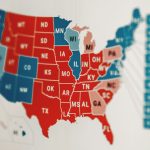Cost of Living Rankings
Understanding the cost of living in various cities is crucial for young professionals looking to move or compare the affordability of different urban areas. This section delves into the rankings of cities with the highest and lowest cost of living in the U.S.
Highest Cost of Living Cities
Several cities in the United States are renowned for their high cost of living, driven primarily by housing expenses, taxes, and the general price level of goods and services.
| City | Cost of Living (% above national average) | Primary Factors |
|---|---|---|
| Manhattan, NY | 122% | Housing, taxes, affluent population |
| Honolulu, HI | 98% | Housing, imported goods |
| San Francisco, CA | 91% | Housing, tech-driven economy |
| Brooklyn, NY | 59% | Housing, urban lifestyle |
| Queens, NY | 36% | Housing, proximity to Manhattan |
Manhattan in New York tops the list with living costs 122% higher than the national average. Housing expenses in Manhattan are 4.8 times the national average, significantly contributing to the high cost of living (CNBC). The presence of a large number of affluent families also drives up average housing costs, further inflating the cost of living (CNBC).
For more information on cities with high living costs, visit our article on highest cost of living cities.
Lowest Cost of Living Cities
Conversely, some cities in the U.S. offer a much lower cost of living, making them attractive to individuals seeking affordability.
| City | Cost of Living (% below national average) | Primary Factors |
|---|---|---|
| Harlingen, TX | -25% | Low taxes, cheap housing, inexpensive gas |
| McAllen, TX | -24% | Affordable housing, low cost of goods |
| Kalamazoo, MI | -23% | Low housing costs, moderate taxes |
| Memphis, TN | -22% | Affordable housing, low cost of living |
| Joplin, MO | -21% | Low housing costs, affordable healthcare |
Harlingen, Texas, stands out as the city with the cheapest cost of living, where residents pay about 25% less than the average American for living expenses (CNBC). The city's low taxes, affordable housing, and proximity to inexpensive gas contribute to its affordability. However, it faces challenges due to a relatively high rate of poverty.
For a more comprehensive list of affordable cities, check out our article on best cities for low cost of living.
Understanding the cost of living in various cities is crucial for making informed decisions about relocation. For detailed comparisons, see our guide on comparing cost of living in different cities.

Factors Influencing Cost of Living
When comparing the cost of living between cities, several factors come into play. These include housing expenses, tax rates, and the disparity between urban and rural areas.
Housing Expenses Impact
Housing costs are a major component of the overall cost of living. In cities like Manhattan, New York, housing expenses are 4.8 times the national average, significantly contributing to the high cost of living (CNBC). In comparison, housing costs in other expensive cities like Honolulu and San Francisco are about three times the national average.
| City | Housing Cost Multiplier (National Average = 1) |
|---|---|
| Manhattan | 4.8 |
| Honolulu | 3.0 |
| San Francisco | 3.0 |
For young professionals looking to compare the cost of living in different cities, understanding these housing expense multipliers is crucial. Detailed information on the average rent in [city] can provide further insights.
Tax Rates and Goods Prices
Tax rates play a significant role in the cost of living. For example, New York City has a sales tax rate of 8.875%, one of the highest in the country, which contributes to the overall higher cost of goods and services. Additionally, high property values, including rent and property taxes, drive up prices in the city.
| City | Sales Tax Rate (%) |
|---|---|
| New York City | 8.875 |
| Honolulu | 4.5 |
| San Francisco | 8.5 |
These tax rates, coupled with the logistics challenges of supplying densely populated urban areas, result in higher prices for goods and services. For a broader comparison, visit our page on cost of living comparison by state.
Urban vs. Rural Disparities
Urban and rural areas exhibit significant differences in cost of living. Generally, rural areas have a lower cost of living due to lower housing costs and fewer amenities. However, the lower population density in rural areas can discourage competition among health care providers, leading to higher premiums.
In contrast, urban areas benefit from higher competition among providers, which can drive premiums lower. This competition is a critical factor in the significantly lower premiums for insurance plans in urban centers compared to rural areas.
| Area Type | Average Health Care Premiums |
|---|---|
| Urban | Lower due to high provider competition |
| Rural | Higher due to less provider competition |
For young professionals, understanding these urban-rural disparities is essential when considering relocation. Explore our resources on comparing cost of living in different cities for more detailed information.
Each of these factors—housing expenses, tax rates, and urban-rural disparities—plays a critical role in determining the overall cost of living in a city. By examining these elements, individuals can make more informed decisions about where to live based on their financial priorities and lifestyle preferences.

Health Care Costs Comparison
When comparing the cost of living between cities, health care expenses are a significant factor to consider. This section delves into the differences in health care premiums between urban and rural areas and the impact of provider competition.
Urban Health Care Premiums
Urban areas tend to have lower health care premiums compared to rural regions. This is primarily due to the larger populations in cities, which invite more competition among insurance plans. More competition often leads to lower premiums as providers strive to attract more customers. According to the Robert Wood Johnson Foundation, insurance plans in urban areas had significantly lower premiums for the second-least expensive silver plan under the Affordable Care Act in both 2016 and 2017 (RWJF).
| Year | Urban Health Care Premiums (Silver Plan) |
|---|---|
| 2016 | Lower |
| 2017 | Lower |
Rural Health Care Premiums
In contrast, rural areas typically have higher health care premiums. This is due to a combination of factors, including fewer residents spread over larger areas, which discourages competition among health plans. In rural areas, insurance providers face higher financial risks due to the smaller pool of insured individuals. Consequently, premiums are often higher to mitigate these risks. However, areas with Medicaid-managed care (MMCO) plans or provider-sponsored plans were associated with significantly lower premiums in rural areas in 2016 and 2017.
| Year | Rural Health Care Premiums (Silver Plan) |
|---|---|
| 2016 | Higher |
| 2017 | Higher |
Impact of Provider Competition
Competition among providers plays a crucial role in determining health care premiums. In urban centers, the abundance of health care providers leads to increased competition, which in turn drives premiums lower. This is a key factor contributing to the significantly lower premiums for insurance plans in urban areas compared to rural areas (RWJF).
For young professionals comparing [city] vs [city] cost of living, it's essential to understand the variation in health care costs between urban and rural settings. This knowledge can aid in making informed decisions about where to live. For a deeper dive into other living expenses, check out our articles on affordable cities to live in and highest cost of living cities.
Food Price Variances
Understanding the variances in food prices is essential when comparing the cost of living between cities. This section details the trends in urban and rural food prices and the influence of inflation.
Urban Food Price Trends
Urban areas often exhibit higher food prices due to several factors, including transportation costs, higher demand, and competitive market dynamics. In cities like [City], groceries such as eggs, bread, milk, and fruit can have significant price differences compared to rural areas. For example, food prices in Toronto are substantially different from those in smaller towns.
| Item | Toronto | Barrie | Owen Sound | Sioux Lookout |
|---|---|---|---|---|
| 12 Eggs | $3.39 | $4.79 | $4.19 | $5.19 |
| Loaf of Bread | $4.39 | $2.99 | $3.79 | $2.99 |
| 1L Milk | $4.19 | $3.39 | $3.59 | $2.39 |
| McIntosh Apples (3 lb) | $5.99 | $7.99 (4 lb) | $3.98 | $9.19 |
Data from Global News
Higher food prices in urban settings can be attributed to the cost of both producing and transporting the food. When gas prices fluctuate, the embedded cost of transportation affects the final pricing.
Rural Food Price Trends
In rural areas, food prices can vary significantly based on the availability of stores and the cost of transporting goods. Generally, rural areas have fewer grocery stores, leading to less competition and higher prices for some items.
| Item | Toronto | Barrie | Owen Sound | Sioux Lookout |
|---|---|---|---|---|
| 12 Eggs | $3.39 | $4.79 | $4.19 | $5.19 |
| Loaf of Bread | $4.39 | $2.99 | $3.79 | $2.99 |
| 1L Milk | $4.19 | $3.39 | $3.59 | $2.39 |
| McIntosh Apples (3 lb) | $5.99 | $7.99 (4 lb) | $3.98 | $9.19 |
Data from Global News
Rural food prices are influenced by the limited number of grocery stores, leading to less competitive pricing. Grocers in these areas may adjust prices based on consumer behavior data and the average income of the region (Global News).
Influence of Inflation
Inflation plays a critical role in the disparity of food prices between urban and rural areas. High inflation rates have made the impact of rising food prices more noticeable. In Canada, food prices increased by 10.3% in 2022, with an average family of four spending $15,222.80 on food last year. This trend is projected to continue, with food prices expected to rise by another five to seven percent on average this year.
Inflation exacerbates the problem of food price disparity, affecting urban and rural areas differently. For a detailed comparison of living expenses, including food costs, in different cities, visit our cost of living comparison by state and comparing cost of living in different cities articles.

Necessity Expenses Breakdown
When comparing the cost of living between cities, understanding the breakdown of necessity expenses is crucial. This section examines the primary components, including housing costs, food expenses, transportation budget, and health care expenditure.
Housing Costs
Housing expenses are often the most significant factor in the cost of living. In cities like Manhattan, housing costs can be exorbitant, averaging 4.8 times the national average (CNBC). In contrast, cities like Honolulu and San Francisco also have high housing costs, averaging about three times the national average.
| City | Housing Cost (Times National Average) |
|---|---|
| Manhattan | 4.8 |
| Honolulu | 3.0 |
| San Francisco | 3.0 |
For more details on housing costs in various cities, visit our article on the average rent in [city].
Food Expenses
Food is a basic need and constitutes the third-largest expense category for consumers. American households spend an average of $8,289 on food annually, which is about 10% of their budget (Bankrate). Food prices can vary widely between urban and rural areas, influenced by factors such as transportation costs, local taxes, and availability of goods.
| Expense Category | Annual Cost (USD) | Percentage of Budget |
|---|---|---|
| Food | $8,289 | 10% |
For more insights into food price trends, check out our article on food expenses in [city].
Transportation Budget
Transportation costs are often the second-largest expense for individuals, accounting for about 13% of their annual budget, or approximately $10,961 (Bankrate). This includes costs related to public transportation, fuel, car maintenance, and insurance. Urban areas with well-developed public transport systems may offer lower transportation costs compared to rural or suburban areas where owning a car is necessary.
| Expense Category | Annual Cost (USD) | Percentage of Budget |
|---|---|---|
| Transportation | $10,961 | 13% |
For a comprehensive comparison, visit our page on transportation costs in different cities.
Health Care Expenditure
Health care is a significant expense, comprising about 8% of an individual's annual budget, or around $5,452 (Bankrate). The cost of health care can vary significantly between urban and rural areas due to factors such as provider competition and availability of services.
| Expense Category | Annual Cost (USD) | Percentage of Budget |
|---|---|---|
| Health Care | $5,452 | 8% |
For more information on health care costs, check out our article on health care expenses in San Francisco.
Understanding these necessity expenses is essential for young professionals evaluating the cost of living in Austin compared to other locations. For further insights, visit our sections on highest cost of living cities and best cities for low cost of living.

Poverty Guidelines Overview
Understanding the poverty guidelines is essential when comparing the cost of living in different cities. These guidelines help to determine the economic status and affordability of living for individuals and families.
History of Poverty Thresholds
The poverty thresholds were developed in 1963-1964 by Mollie Orshansky of the Social Security Administration. These thresholds serve as a measure to calculate official poverty statistics (ASPE). The thresholds are uniform across the United States, with no separate figures for different states, metropolitan areas, or cities.
Poverty thresholds have been available since 1973, with weighted average thresholds available from 1959. These thresholds are essential for various federal programs and policies aimed at addressing poverty.
| Year | Weighted Average Threshold for a Family of Four (1963-2022) |
|---|---|
| 1963 | $3,128 |
| 1973 | $4,540 |
| 2022 | $27,750 |
Usage and Updates of Poverty Guidelines
The poverty guidelines, a simplified version of the federal poverty thresholds, are issued annually in the Federal Register by the Department of Health and Human Services (HHS). These guidelines are essential for administrative purposes and are the same for the 48 contiguous states and the District of Columbia, with separate guidelines for Alaska and Hawaii (ASPE).
The poverty guidelines are used by various federal and state programs to determine eligibility for assistance. These include programs like Medicaid, Head Start, and the Supplemental Nutrition Assistance Program (SNAP). The guidelines may be implemented as soon as they are published in the Federal Register each year, usually in late January.
| Year | Poverty Guideline for a Family of Four (48 Contiguous States and DC) |
|---|---|
| 2006 | $20,000 |
| 2010 | $22,050 |
| 2022 | $27,750 |
The continuous updates of these guidelines ensure they reflect the current economic conditions, helping programs to provide adequate support. For more information on how these guidelines affect city living, visit our pages on affordable cities to live in, expensive cities to live in, and cost of living in city.
























Post Comment
You must be logged in to post a comment.